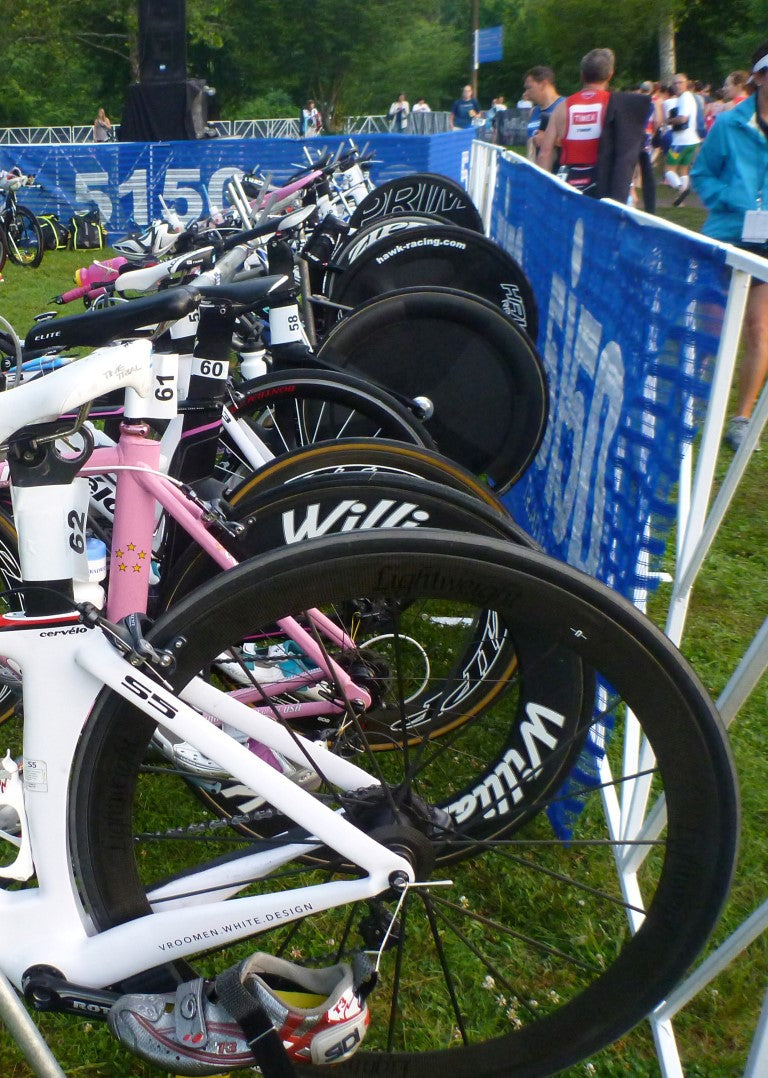
12 Days of Triathlon Gear: Day 5 - Do Aero Wheels Make Sense For You

The holidays are a time to celebrate with friends and family, look back on the year's accomplishments, and give thanks for everything we have. But they're also an excellent excuse to stock up on triathlon gear for next season! Obviously, we're partial to our own Switch Aero System, but in this 12-part series we'll highlight and recommend some of the best triathlon gear that will get you to the finish line faster in your next race.
Aero wheels are often one of the first upgrades that people think about once they are bitten by the triathlon bug. If you're like me, you've lusted after the beautiful deep-section wheels on the fancy bikes next to yours on the transition rack. Aero wheels improve your aerodynamics in two ways: they smooth the flow of air over the front and rear parts of the wheel, and they also serve as a fairing for the spokes near the rim, where the wheel is rotating fastest.
So what's the downside? Weight and cost. For triathletes, the weight issue is a bit of a red herring; in most cases the aerodynamic benefit will vastly "outweigh" any weight penalty (see what I did there). The cost issue, on the other hand, is a very real hurdle. A top-of-the-line set of carbon hoops can cost upwards of $3000 USD, which for most people is substantially more than they paid for their bike (or their first car!). Even at the more budget-conscious levels, aero wheels are still expensive enough to make you think twice.
Compared to adding aerobars, buying a sleek tri-suit, or getting an aero helmet, the drag savings from upgrading your wheels is comparatively small, which means that they are extremely expensive from a $/watt-saved perspective. Put another way, it makes sense to invest in the other upgrades before splurging for new wheels.
What to look for:
Full Carbon vs. Carbon+Aluminum - Aero wheels tend to fall into two categories: full carbon and aluminum+carbon. Full carbon wheels are made completely made out of carbon fiber, while aluminum+carbon wheels have an aluminum rim and braking surface, covered by a (usually) non-structural carbon fairing. Full carbon wheels tend to be lighter than carbon+aluminum wheels, and are often stiffer because of the extremely stiff carbon material (which can help handling, but may reduce riding comfort). However, full carbon wheels also tend to be more expensive, and because the brake track is carbon fiber, they require the use of special carbon-specific brake pads. Even with these special brake pads, braking power and modulation is often not as good as on aluminum-rimmed versions.
Clincher vs Tubular - Aero wheels are available in two different rim types: clincher and tubular. Clincher rims are the standard bicycle rims that most of us are accustomed to. The tire and inner tube are separate components, and the inner tube can be changed relatively easily and inexpensively if you get a flat tire. Tubular rims require a dedicated tubular tire, with the inner tube sewn in to the tire, which is then glued to the rim. Ride quality is slightly better, but they are difficult to change if you get a flat, and they're much more expensive to replace. Unless you specifically know you prefer tubular tires, you're probably better off going with clinchers.
We like:
Flo Cycling - Flo cycling makes aero wheels with aluminum rims and carbon fairings, representing a great lower-cost (well, relatively speaking anyway) option for improved aerodynamics. They sell directly to consumers during periodic presales, but make sure you have your credit card ready because they tend to sell out very quickly.
- Zipp sets the industry benchmark for aerodynamics and performance, but that performance comes at a high price. If you have the cash, you can't go wrong with a set of Zipp 404s.
Be sure to check out the previous post in our 12 Days of Triathlon Gear series: 4 Things You Didn't Know About Redshift Aero Bars.


